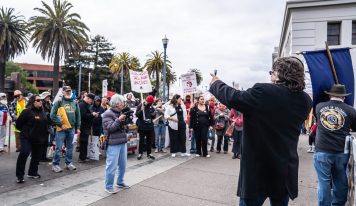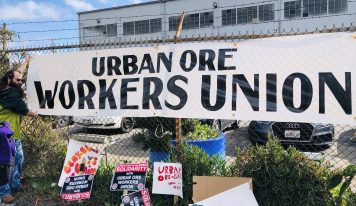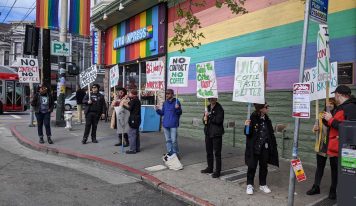Salesforce informed the public on Monday, February 9th, that they will allow all of their employees to work remotely. This announcement follows a growing trend of tech companies encouraging remote work during the pandemic, with many taking more radical steps by relocating entirely across the country to cheaper cities and towns. This recent announcement is notable for several reasons: Salesforce Tower is the tallest skyscraper in San Francisco, dethroning the iconic Transamerica Building by over 200 ft, and is now mostly empty, devoid of many of the companies that formerly resided in it. Additionally, as San Francisco’s largest private employer, this Work from Anywhere (WFA) policy now leads to an acceleration of San Francisco’s growing tech exodus. The Salesforce tower, an architectural icon of tech and entrepreneurial spirit, begins to ring more hollow as fewer employees will physically work in the space.
It’s estimated that roughly 65% of Salesforce’s current workforce will take advantage of the new policy. Many other tech companies are currently in limbo with regard to their Bay Area office locations. With WFA policies becoming more commonplace, the shift will reshape cities as a whole. This places residents in an exciting discussion – one that centers on how we ought to rethink San Francisco and how the city should evolve into the future, into a post-pandemic world.
The first question that should be asked is around what will happen to the now hollow spaces being left behind. One response that has come to many is transitioning these spaces into temporary shelters for the unhoused. Social distancing has made Covid even more deadly for the unhoused, and proper allocation of currently empty real estate would provide much-needed support for unhoused people. However, there are challenges that come with this proposal, both architecturally and legally. Construction costs to convert offices to residences are not cheap and one can only imagine the fight for who would foot that bill.
Even as budget conversations proceed, the process of re-zoning offices to residential spaces can betime consuming. This lengthy process is compounded even further as construction times in San Francisco are notoriously long and progress slow.
However, finding new housing for those without it does not suddenly alleviate the issues faced by San Francisco’s most marginalized communities. San Francisco has many notable food deserts which are mostly located downtown. Because so many of the presumably renovated offices would be downtown, the problem then becomes one of access to affordable and healthy food. Food access is a problem that exists independent of new apartments/living spaces, however, and has been gaining traction with local organizations.
As remote work continues to grow, the importance of downtown as a city center for working will likely fade. From that decline rises an interesting discussion about urban planning and development. Could a decentralized city, a seeming oxymoron, somehow emerge in the wake of COVID? How might that new city shape future commerce and transportation? There is certainly an argument to be made for the necessity of cultural centers and the proverbial “town square” where residents can congregate. The survival of meeting places is unquestioned, but are the days of major metropolitan areas numbered in the digital age.
The cultural void that has been left in San Francisco becomes exacerbated when one considers how many working-age individuals have decided to leave San Francisco for ostensibly cheaper cities. The questions, in this case, morph from how do we think about San Francisco, to what would attract someone to live here and how ought a community rebuild? Although businesses can relocate or become completely distributed, cities, by definition, cannot. San Francisco is becoming more hollow as its defining feature for the past twenty years, tech, is leaving. Homelessness and the high cost of living have been San Francisco’s main detractors, caused by larger systemic issues. The worry becomes one that, if these issues are not addressed at a more systemic level, that they will only grow leading to a more prolonged exodus.
As San Francisco moves forward, there will be more permanent changes that need to be addressed. Businesses might return, but that return does not mark the solution to our problems. Rather, it will only deepen the wounds that have been further opened during the pandemic. The sustainability of these solutions should be paramount as growing and rebuilding the city will not happen overnight. San Francisco is in dire straits and the need to analyze the underlying problems that have brought us to this point have come to a head. With Salesforce having signaled another coming exodus of workers, reimagining how San Francisco should be shaped and what will fill these hollow buildings is paramount to the city’s survival and future.
Photo Courtesy: “City Skyline during Golden Hour” by Kehn Hermano





